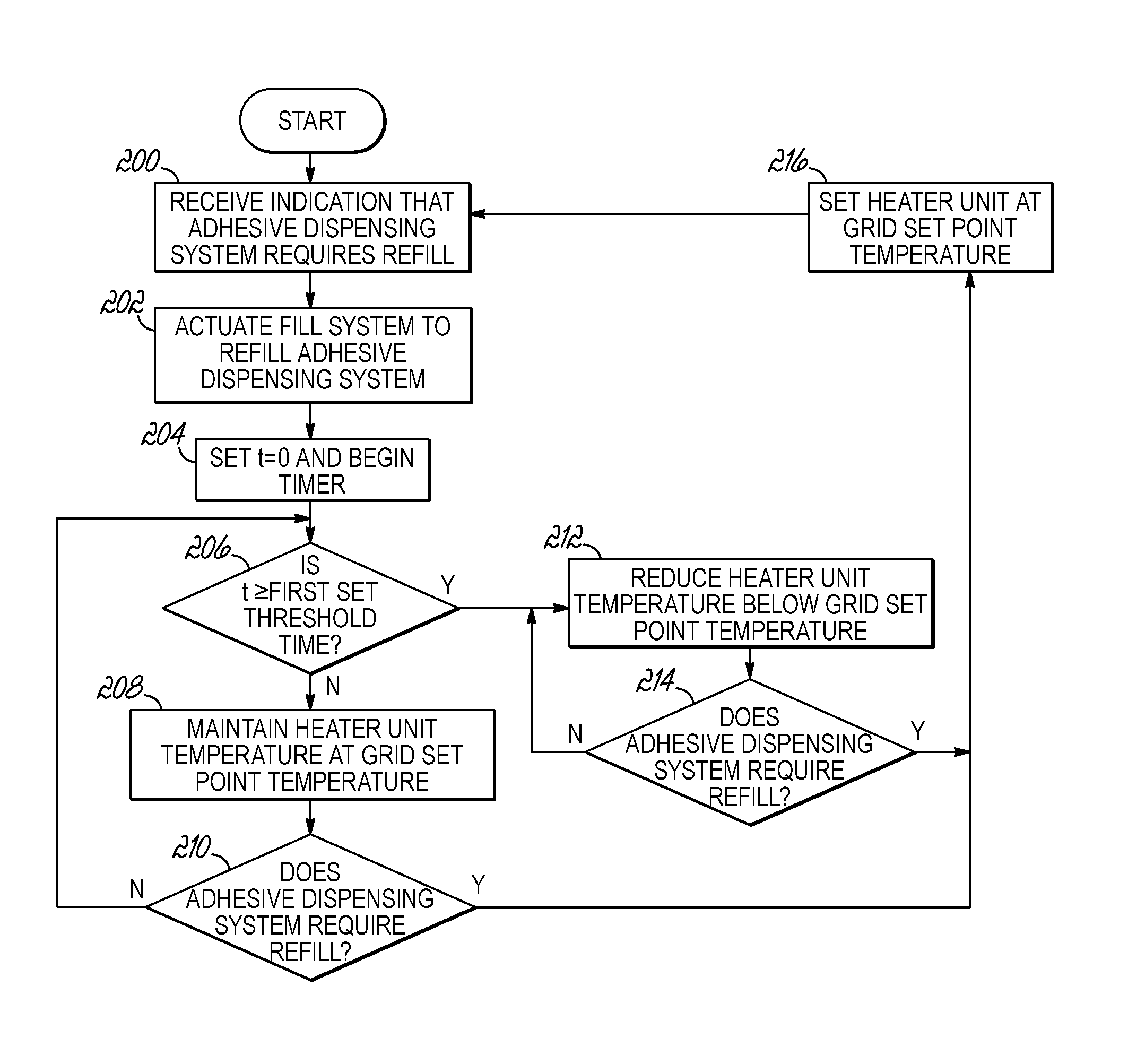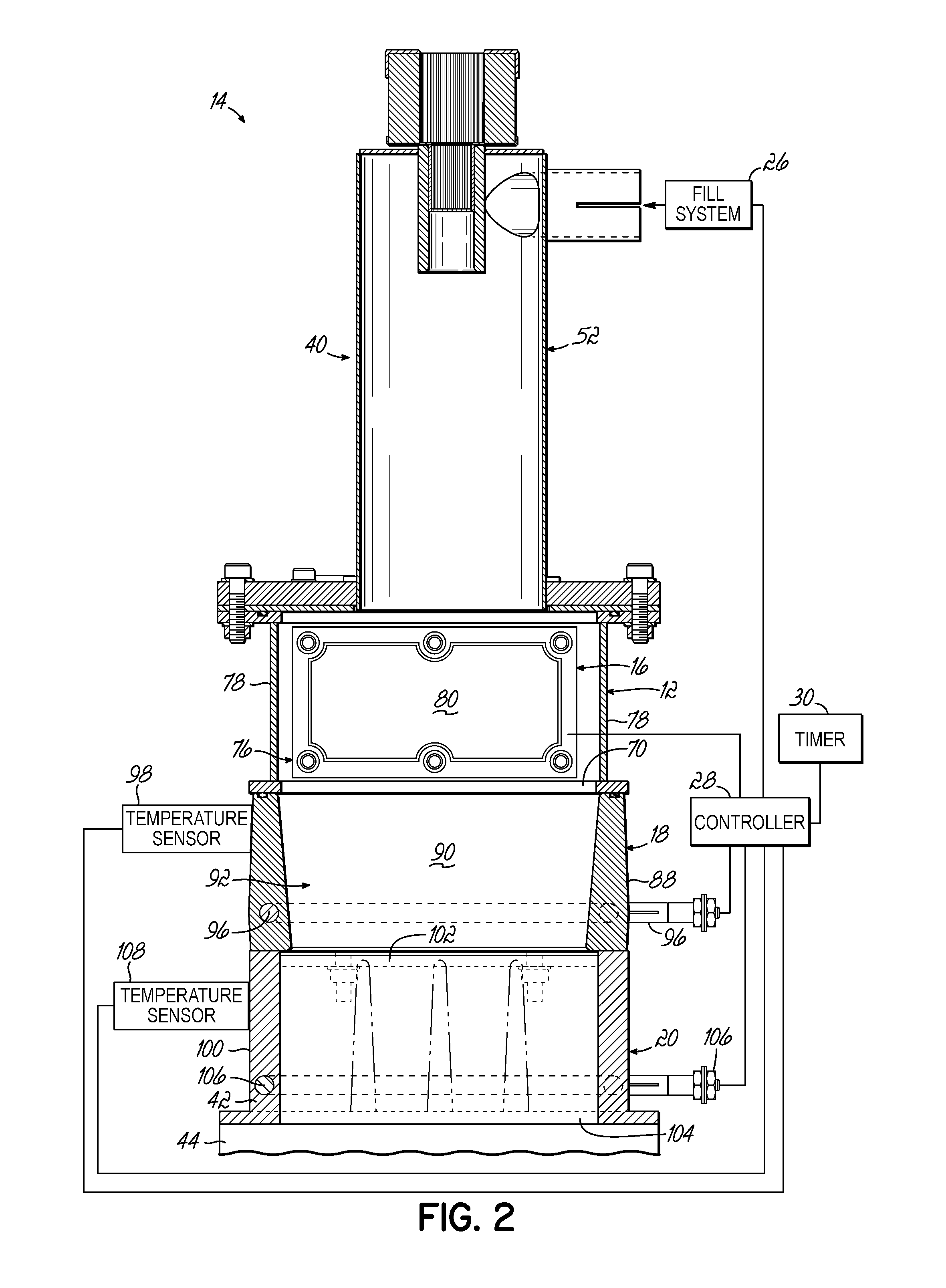Adhesive dispensing system and method using smart melt heater control
a technology of heating control and adhesive, which is applied in the direction of liquid transfer devices, level indicators by physical variable measurement, pipe heating/cooling, etc., can solve the problem of limited change in temperature of adhesive at the heater unit caused by the reduction of the temperature of the heater unit, and achieves a short warm-up time, reduce the degradation rate of adhesive, and minimize outgassing
- Summary
- Abstract
- Description
- Claims
- Application Information
AI Technical Summary
Benefits of technology
Problems solved by technology
Method used
Image
Examples
Embodiment Construction
[0026]Referring to FIGS. 1 and 2, an adhesive dispensing system 10 in accordance with one embodiment of the invention is shown. The adhesive dispensing system 10 is configured to optimize the dispensing operation by using a smart melt heater control process to reduce the temperature of hot melt adhesive held within the dispensing system 10 during periods of low throughput. This reduction of temperature is automatically actuated based on the frequency of refilling a hopper 12 within the dispensing system 10, thereby significantly reducing the rate of degradation of the adhesive during the periods of low throughput. Moreover, unlike a standby mode procedure which requires a lengthy warm-up time to return to dispensing operations, the reduction in temperature of the adhesive caused by the smart melt heater process is tailored to enable rapid or immediate warm-up to dispensing operations after a reduction in temperature. In addition, the standby mode may still be used after a long perio...
PUM
 Login to View More
Login to View More Abstract
Description
Claims
Application Information
 Login to View More
Login to View More - R&D
- Intellectual Property
- Life Sciences
- Materials
- Tech Scout
- Unparalleled Data Quality
- Higher Quality Content
- 60% Fewer Hallucinations
Browse by: Latest US Patents, China's latest patents, Technical Efficacy Thesaurus, Application Domain, Technology Topic, Popular Technical Reports.
© 2025 PatSnap. All rights reserved.Legal|Privacy policy|Modern Slavery Act Transparency Statement|Sitemap|About US| Contact US: help@patsnap.com



